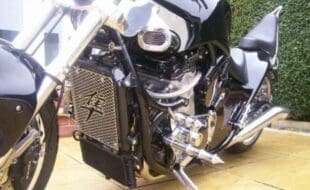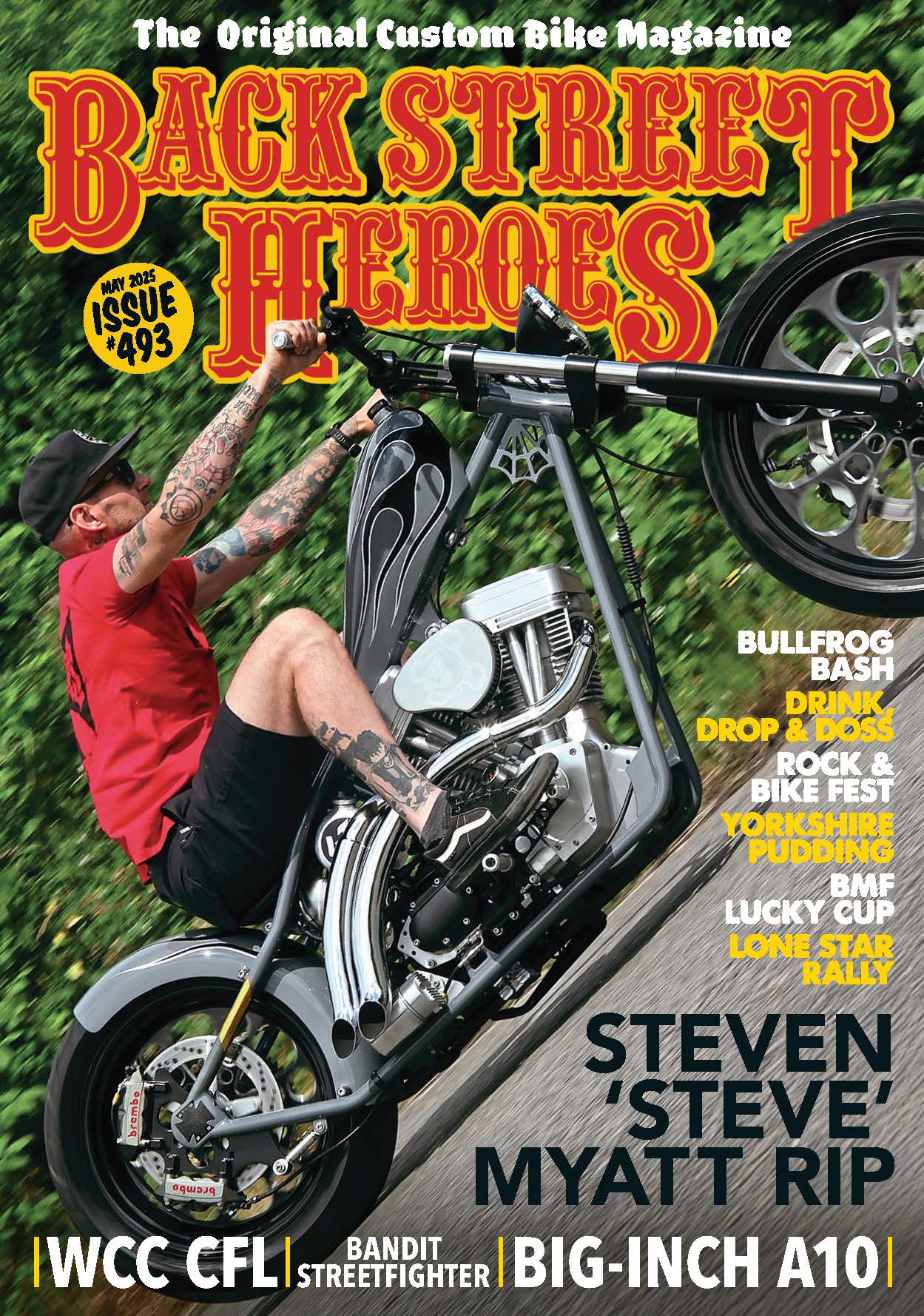Bike building, as I’m sure you know, can be thrilling, educating, rewarding. It can also be a massive pain in the arse…
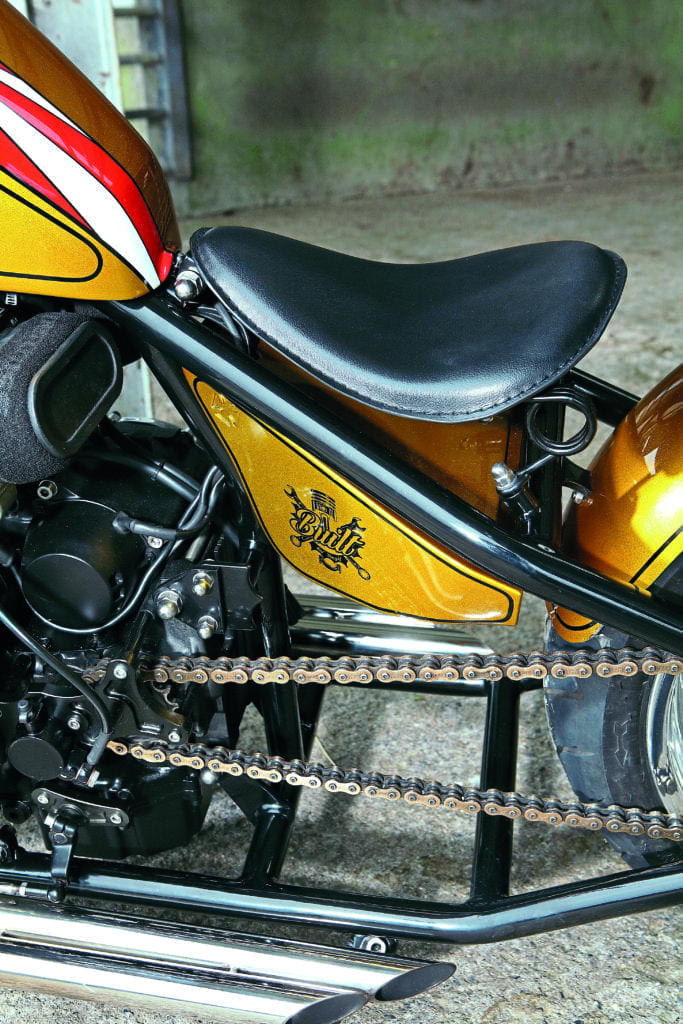
Words & pics: Ian Shipley
Enjoy more Back Street Heros reading in the monthly magazine.
Click here to subscribe & save.
There comes a point in a build, especially one that’s fighting you every step of the way, where you have to decide whether to persevere with it, scrap it and go back to the beginning or just step away and get some space for your head (man). Shane Egan, the owner and builder of this bike, had reached that point, he really had, but not with this bike. No, it was with another.
He’s been building this other bike for a while and, as I said above, it was fighting him all the way, and he’d got the point where, if he didn’t walk away, he was going to, as our American cousins say, completely lose his shit with it. He needed to find something to distract him, something to take his mind off the bastard thing. A while before he’d come across a hardtail frame and motor on that there eBay at such small money and he thought “f**k it, I’ll buy it”, thinking it was something he could look at again at some point in the future. This, it turned out, was prescient because, as the other one was giving him gyp, he could dig the eBay frame and lump out and save his head from exploding.
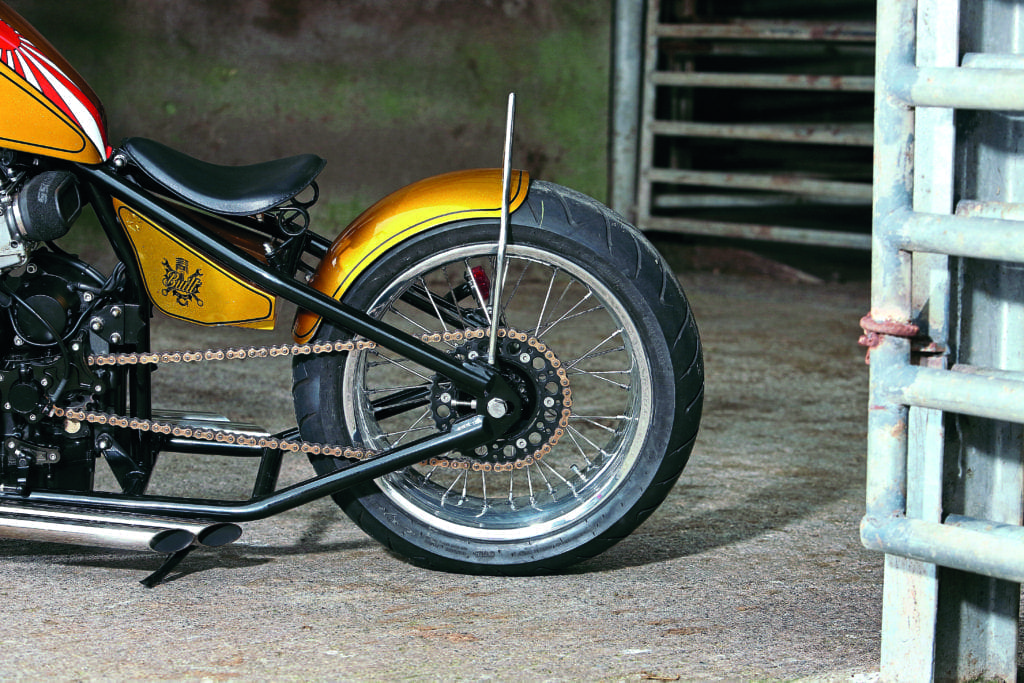
The frame was a Hard-Up Choppers Wormburner and the motor was a Bandit 600 and, after spending some time contemplating them in the company of his loyal Staffie, he set about taking these two separate items into one complete bike. The frame needed, as they do, a full complement of brackets making for the engine mounts, the oil-cooler, and the many little bits a motorcycle needs to actually be a motorcycle, and he also made a new side-stand for it (always useful), and a nifty set of forward controls too.
The engine was rapidly stripped down and blanked off prior to being glass-blasted and then, once nice and clean and grease-free, it was painted with 300-degree Douglas stove black. Modified Bandit 1200 carbs with Ram-Air filters take care of it breathing in, and a set of Hard-Up’s ‘Loud Bastard’ exhausts announce its arrival.
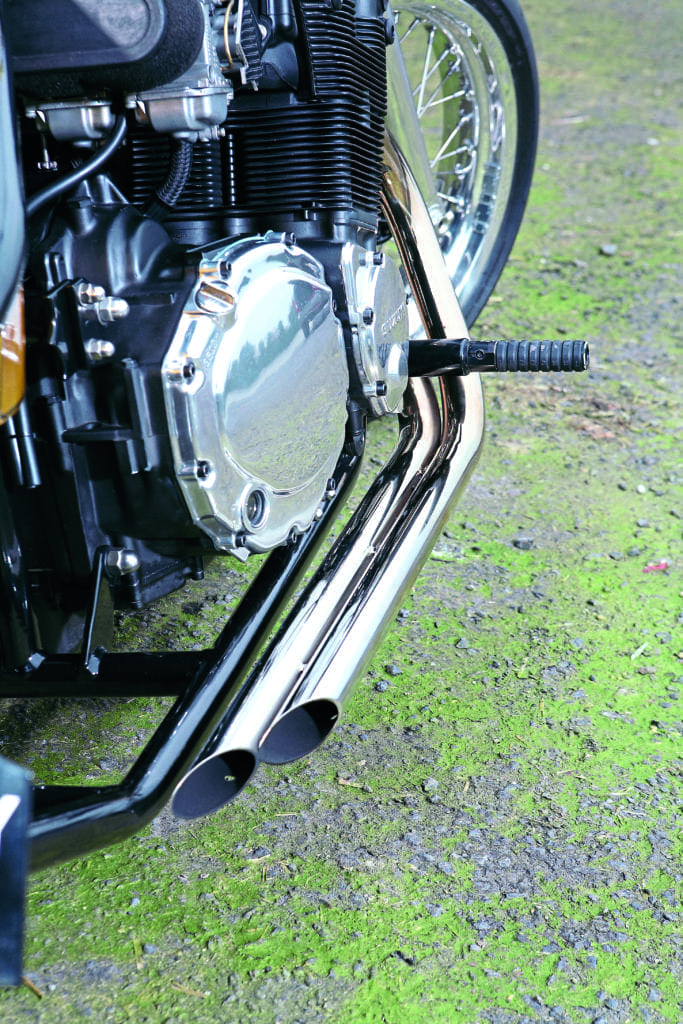
Moving on to the running gear; the wheels are both 17-inch Aprilia supermoto items, the front with a Galfer wavey disc and a single Bandit 1200 caliper, and the rear with… err, no brake at all. Yes, you did read that right – no rear brake. Now if you’re wondering why in God’s name (other imaginary cloud fairies are available) Shane doesn’t have a rear brake, it’s simple – he has years of experience racing bikes in the Irish road racing championships (yep, he’s one of those insane guys who race on public roads at 200mph, in fact he was Irish champion in 2013!) and at the Isle of Man TT, and he says: “I’ve never used one in all the years I was racing, why would I start now?”

Anyway, the forks are stripped-back 1200 Bandit with modified Bandit yokes, topped by massive 20-inch apes, and they sit just in front of a modified King Sportster petrol tank with an external sight gauge, and a paint scheme that’s to die for. The candy gold flake base with its Rising Sun flag (originally the war flag of the Imperial Japanese Army, later the naval ensign of the Imperial Japanese Navy, it’s still used in Japan as a symbol of tradition and good fortune), the pin-striping, and the ‘Built Not Bought’ logos were superbly executed by Veaceslav Salaru AKA Slava at Slava Airbrushing. He also painted the one-off rear ’guard, and the modified HUC battery-cum-electrics box, and the bright gold is nicely offset by the gloss black on the frame, yokes and ape hangers. The rather wonderfully named Mushty’s Polishing, along with a gentleman named Jozef Fabry, made all the non-shiny bits shiny.
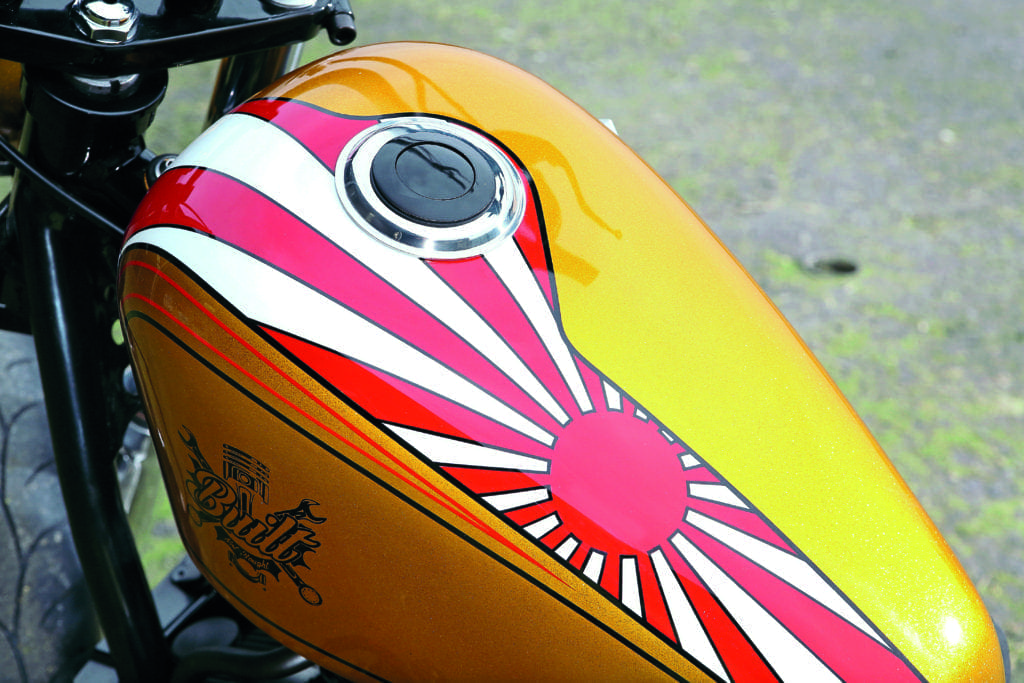
As you can see when you look at these pics – this chop is pretty minimalist and what electrics there are exist to meet basic requirements. There’s no switchgear at all, no instrument dials to clutter the handlebars, and the wiring loom that runs the 5.75-inch Bates-style headlight and Iron Cross rear light is tucked away so as not to be visible.
Soon after the bike’s maiden run, Shane took it to be set up on his local dyno so that it’d run perfectly with no flat spots in its power delivery and has impeccable low-speed and high-speed manners. That’s a nod to his racing heritage right there – those guys know the value of time well spent on a good dyno.

All in all, he made a good decision to switch projects, partly because it allowed him to create a stunning bike and partly because it allowed him to keep his sanity, and it’s given him the breathing space he needed to get his head around his other project which, judging from the photos I’ve seen, is very interesting indeed. Watch this space!



